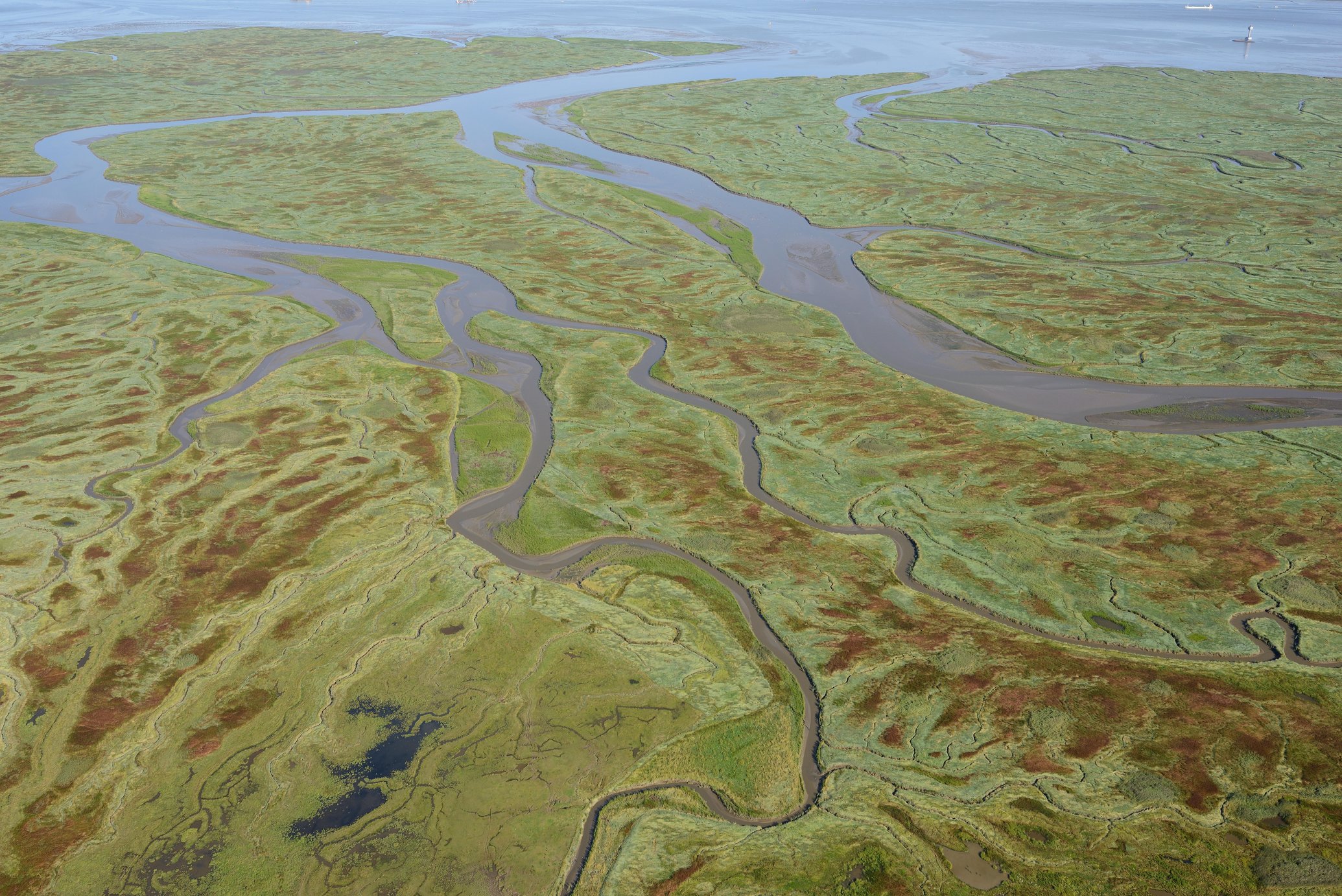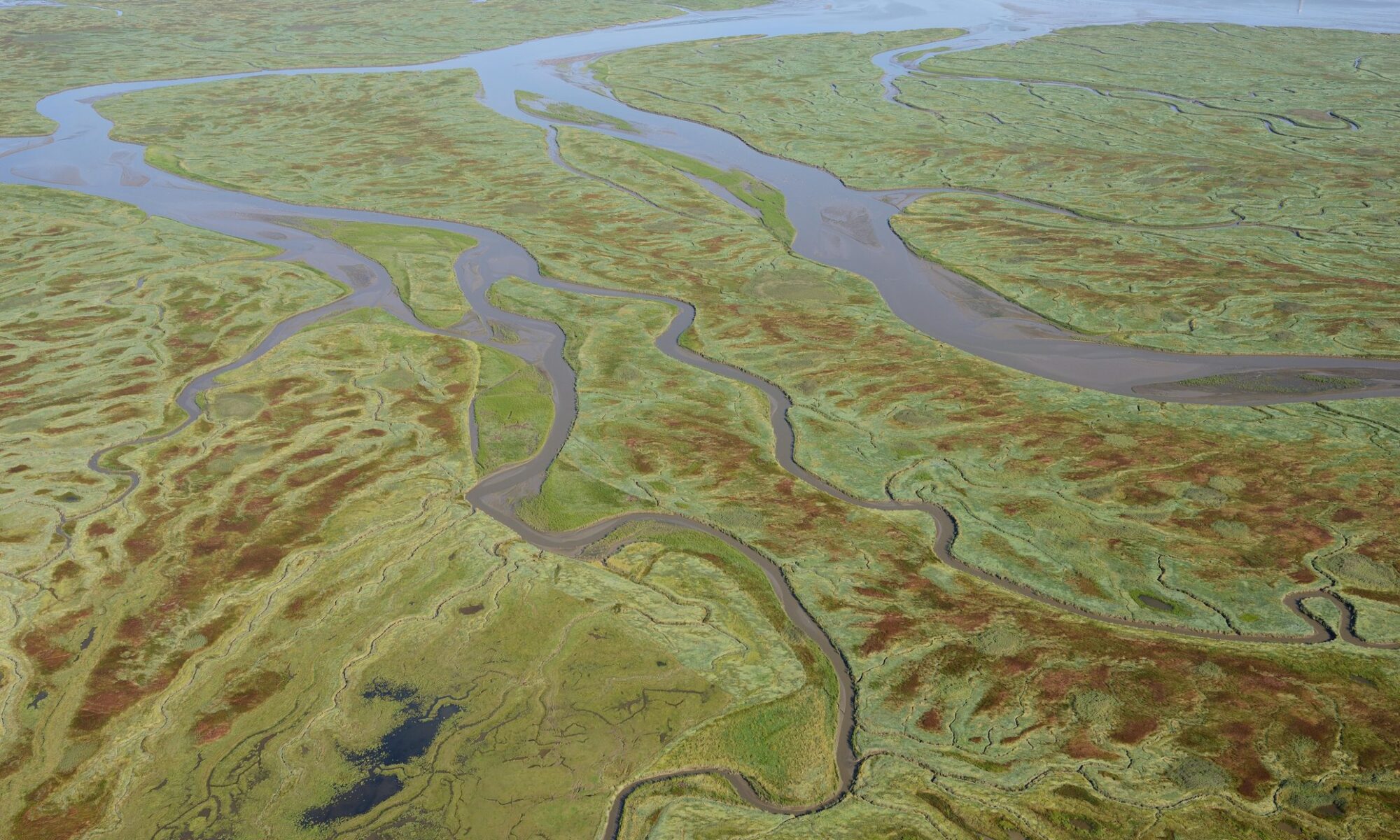Les marais littoraux comptent parmi les défenses naturelles les plus puissantes contre l’élévation du niveau de la mer. Ils agissent comme des barrières naturelles qui protègent les côtes contre l’érosion et les inondations. Mais de nouvelles recherches apportent un éclairage surprenant sur leur vulnérabilité : une végétation dense rend les marais plus sensibles à la montée des eaux, car les plantes entravent la dispersion des sédiments.
Une équipe de chercheurs comprenant Olivier Gourgue et Jean-Philippe Belliard de l’Université d’Anvers (Global Change Ecology Centre, département Ecosphere) et de l’Institut des Sciences naturelles a utilisé des modèles informatiques avancés pour étudier le développement à long terme de ce type marais. Leurs conclusions ont été publiées dans Limnology and Oceanography Letters.
Les résultats sont remarquables : bien qu’une végétation dense retienne les sédiments à proximité des chenaux, elle empêche leur transport vers l’intérieur du marais. La conséquence ? Au lieu d’une répartition uniforme des sédiments dans toute la zone, ceux-ci restent concentrés sur les bords des chenaux. Les parties centrales du marais deviennent alors relativement plus basses, rendant l’écosystème plus vulnérable à l’élévation du niveau de la mer.
Ces conclusions remettent en question une idée largement acceptée : une végétation plus abondante est toujours bénéfique pour la survie des marais face aux changements environnementaux. En montrant comment la densité végétale influence le transport des sédiments, l’étude souligne la complexité de l’équilibre naturel.

Marais littoraux et élévation du niveau de la mer
Pour cette étude, un puissant modèle numérique appelé Demeter a été utilisé pour simuler l’évolution des marais sur une période de 200 ans, dans différentes conditions de végétation. Cela a permis aux chercheurs d’isoler l’influence de la végétation sur le transport des sédiments, un phénomène difficile à mesurer sur le terrain sur une telle période.
Les prévisions du modèle ont ensuite été confirmées par des observations en Chine, où les zones côtières à végétation dense présentent les mêmes schémas de répartition inégale des sédiments. Ces données de terrain ont été publiées dans Global Change Biology. En combinant modélisation et observations, les chercheurs ont obtenu une vision plus complète du fonctionnement des marais sur de longues périodes.
Les marais sont essentiels à la protection des côtes, à la biodiversité et au stockage du carbone. S’ils ne parviennent pas à maintenir leur élévation par rapport à la montée des eaux, ils risquent de disparaître. Ce phénomène entraînerait une érosion côtière accrue, une perte de biodiversité et une réduction du stockage du carbone.

Équilibre entre sédiments et végétation
L’étude souligne que conserver un tel écosystème naturel nécessite plus que la simple plantation de nouvelle végétation. Il est essentiel de comprendre l’ensemble du système de transport des sédiments et de s’assurer que les marais reçoivent suffisamment de matière pour croître de manière saine. Cela a des implications importantes pour les décideurs politiques et les gestionnaires de la nature.
Olivier Gourgue souligne : « Les projets de restauration côtière visent souvent à planter autant de végétation que possible pour stabiliser les zones littorales. Nos résultats montrent cependant qu’un mélange de végétation à densité variable ou le recours à des processus naturels pourrait être plus efficace à long terme. »
Il est également crucial de maintenir l’approvisionnement en sédiments. Les interventions humaines comme l’endiguement des rivières et le dragage des voies navigables peuvent limiter l’apport de sédiments, mettant en péril la survie et la fonction protectrice des marais.
Une meilleure compréhension du fragile équilibre entre végétation et transport des sédiments nous permettra de mieux protéger ces écosystèmes essentiels et les services précieux qu’ils rendent à l’homme et à la nature.
L’étude publiée dans Limnology and Oceanography Letters est le fruit d’une collaboration entre des chercheurs du groupe de recherche ECOSPHERE de l’Université d’Anvers (Belgique), du Department of Earth and Environment de Boston University (États-Unis), de la Direction opérationnelle Milieux naturels de l’Institut des Sciences naturelles (Belgique) et du département de géographie physique de l’Université d’Utrecht (Pays-Bas). Pour la publication dans Global Change Biology, les chercheurs belges ont collaboré avec des collègues du State Key Laboratory of Water Environment Simulation de la Beijing Normal University, du Environmental Research Center de la Duke Kunshan University et du State Key Laboratory of Estuarine and Coastal Research de l’East China Normal University (Chine).

